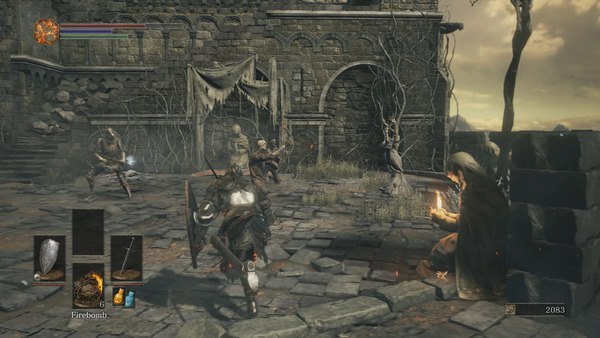Understanding the Basics of Combat

Combat in Dark Souls III is both nuanced and punishing. Mastering the basics can significantly increase your chances of survival.
Timing and Patience
Unlike many action RPGs, Dark Souls III rewards patience and timing over frantic button-mashing. Learning enemy attack patterns is essential. Each enemy has a specific rhythm to their attacks, and understanding this can allow you to dodge or block effectively.
- Observation: Spend time observing enemies before engaging.
- Practice: Use weaker enemies to practice dodging and timing.
Stamina Management
Your stamina is a crucial resource in Dark Souls III. Every action—attacking, dodging, or blocking—consumes stamina, so managing it wisely is vital for success.
- Avoid Overcommitting: Don’t unleash a flurry of attacks without considering your stamina reserve.
- Retreat Wisely: If your stamina is low, it’s often better to retreat and wait for a moment to recover.
Character Creation and Builds

The character creation process in Dark Souls III allows for a diverse range of builds, which can greatly influence your gameplay experience.
Choosing the Right Class
When starting your journey, selecting a class that suits your playstyle is crucial. Each class comes with unique stats and starting equipment.
- Knight: A balanced choice with strong armor and a sword, ideal for beginners.
- Thief: Offers higher dexterity for agile playstyles and backstabs.
Customizing Your Build
As you progress, consider how you want to shape your character. Here are a few popular builds:
- Tank Build: Focus on Vitality and Endurance for high health and stamina.
- Mage Build: Prioritize Intelligence or Faith for powerful spells.
- Dexterity Build: High Dexterity allows for fast weapon strikes and critical hits.
Exploration and the World of Lothric

The world of Lothric is vast and interconnected, filled with hidden paths and secrets.
Environmental Awareness
One of the game’s core mechanics is exploration. Pay attention to your surroundings to uncover shortcuts and hidden items.
- Listen for Sounds: Some secrets are revealed through environmental sounds, like the clinking of chains.
- Look for Illusions: Certain walls are illusory, hiding pathways or treasures.
Shortcuts and Bonfires
Bonfires serve as checkpoints, but also as fast travel points. Finding shortcuts can save you from retracing long paths.
- Explore Thoroughly: Always take time to explore areas. You might discover a hidden shortcut back to a bonfire.
- Rest at Bonfires: Make a habit of resting at bonfires to replenish your resources.
Combat Strategies

Fighting in Dark Souls III requires a blend of aggression and defense. Here are key strategies to keep in mind.
Use of Shields and Dodging
Shields can be a great asset, but understanding when to block or dodge is critical.
- Block: Use shields against predictable attacks, but be cautious of stamina drain.
- Dodge: Timing your dodges can help you avoid damage altogether, especially against heavy attacks.
Combos and Attacks
Combining different attacks can maximize damage output and keep enemies off-balance.
- Light and Heavy Attacks: Mix light and heavy attacks for varied damage.
- Rolling Attacks: Initiating attacks after a roll can catch enemies off guard.
Leveling Up and Upgrading Equipment
Leveling your character and upgrading equipment are fundamental aspects of progressing in Dark Souls III.
Understanding Stats
When leveling up, allocate points to the stats that benefit your build. Here’s a quick guide:
- Vitality: Increases HP, useful for all builds.
- Strength: Increases damage with heavier weapons.
- Dexterity: Enhances speed and damage for lighter weapons.
Upgrading Weapons

Upgrading weapons is crucial for maintaining your effectiveness as you face tougher enemies.
- Finding Materials: Collect Titanite shards and other materials to upgrade your weapons.
- Choosing Upgrades: Decide whether to focus on one weapon or diversify for versatility.
Boss Strategies
Boss battles are a hallmark of the Dark Souls experience. Knowing how to approach these encounters can make all the difference.
Learning Attack Patterns
Each boss has unique attacks and phases. Familiarize yourself with their behavior to exploit weaknesses.
- Phase Transitions: Many bosses change tactics when their health is low, so stay alert.
- Patience is Key: Rushing in can lead to quick deaths. Wait for openings.
Summoning Help
If you’re struggling with a boss, consider summoning other players for assistance.
- Use of Signs: Look for summon signs near boss doors.
- NPC Summons: Some bosses allow you to summon NPCs, which can help distract or deal damage.
Managing Resources
In Dark Souls III, resource management is paramount. Here’s how to effectively manage your healing items and estus flasks.
Estus Flasks
Your estus flasks are your primary means of healing, so use them wisely.
- Refill at Bonfires: Always replenish your flasks at bonfires, but be cautious about how often you rest.
- Upgrade Estus: You can choose to increase the number of uses per flask or boost their healing power.
Items and Consumables
Make use of consumables, as they can provide significant advantages during tough encounters.
- Buff Items: Items like Gold Pine Resin can temporarily enhance weapon damage.
- Status Effects: Use items that inflict status effects to gain an edge over difficult enemies.
Multiplayer Aspects
Dark Souls III features a robust multiplayer system that can enhance your experience.
Co-op Play
Playing with friends or other players can make tough areas more manageable.
- Summoning: Use summoning signs to bring in allies to help with bosses or challenging areas.
- Communication: Use gestures to communicate with your teammates.
PvP Combat
Engaging in PvP can be a fun diversion, but it’s essential to be prepared.
- Know Your Build: Understand the strengths and weaknesses of your build before entering the arena.
- Practice: Duel against friends to refine your skills without the pressure of loss.
Understanding Lore and Story
The lore of Dark Souls III is rich and often obscured. Engaging with the story can enhance your experience.
Item Descriptions
Pay attention to item descriptions, as they often provide insight into the game’s lore.
- Storytelling Through Items: Many items contain snippets of history, revealing the game’s world and its characters.
- Environmental Storytelling: The design of each area contributes to the overarching narrative.
NPC Quests
Many NPCs have quests that can enrich your understanding of the world.
- Follow Dialogue: Engage with NPCs and follow their dialogue to discover quest lines.
- Multiple Endings: Some quests can lead to different endings, encouraging exploration.
Conclusion
Dark Souls III is a complex and rewarding experience that requires patience, skill, and strategy. From mastering combat to understanding the intricate lore, this game offers endless depth for those willing to explore. By utilizing the tips and guides outlined above, you can better navigate the challenges Lothric has to offer and immerse yourself fully in its dark beauty. Prepare to die, but also prepare to rise again, stronger and more skilled than before.
Embrace the darkness of Dark Souls III with patience, strategy, and exploration.


